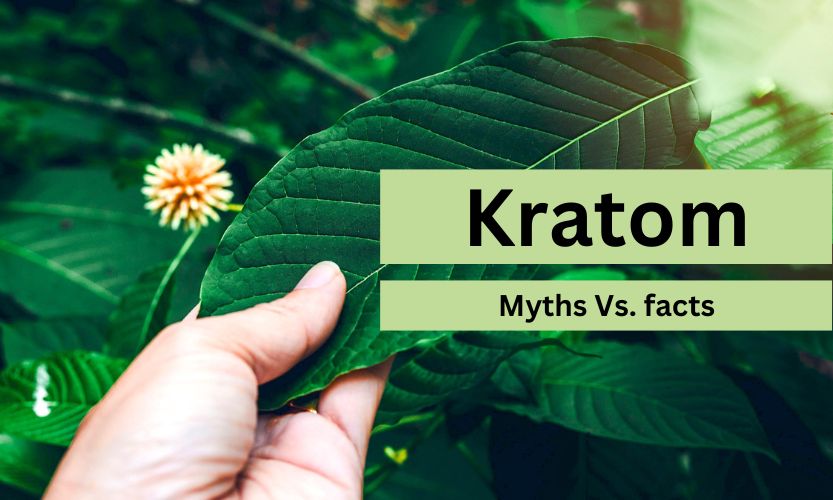In recent years, kratom has emerged as a subject of both fascination and controversy. Hailing from Southeast Asia, this herbal supplement has garnered attention for its potential medicinal benefits, yet it's also shrouded in myths and misconceptions. Join us as we embark on a journey through the world of kratom, where we'll uncover the truth behind the hype and debunk common misconceptions.

What is Kratom - A Quick Snippet

Credit: John Hopkins Medicine
Debunking Common Myths About Kratom:
Myth 1: Kratom should be classified as a Schedule I controlled substance, ranking it higher than cocaine and methamphetamine.
Fact: Schedule I substances are without accepted medical use and have a high potential for abuse. However, published analyses have shown that Kratom does not meet the criteria to be a Schedule I drug. Additionally, it does not fit into the FDA's 2017 abuse potential assessment guidance. Respondents to official surveys from the federal Substance Abuse and Mental Health Services Administration do not report abusing Kratom or seeking treatment for Kratom dependence, which refutes claims from treatment clinics suggesting widespread Kratom abuse. Furthermore, scheduling Kratom would impede further research on its potential benefits.
Myth 2: Kratom is highly addictive and prone to abuse.
Fact: Similar to coffee, tea, and other caffeinated drinks, consumers may become dependent on Kratom with daily use, but this is not the same as addiction. Withdrawal symptoms of Kratom are comparable to those of caffeine, nicotine smoking cessation aids, or antidepressants. Unlike substances with high abuse potential, increasing the dosage of Kratom does not lead to exponentially stronger euphoriant effects.
Myth 3: Kratom is responsible for more than 44 deaths according to the U.S. Food and Drug Administration (FDA).
Fact: There are no deaths directly linked to Kratom consumption. Recently published studies found no evidence of deaths linked to Kratom, and publicly available data show that nearly all of the recently reported fatalities were found to have multiple substances present in their system at the time of death and/or prior health issues. Contrast this with the fact that more than 115 Americans die daily from opioid overdoses, according to The National Institute on Drug Abuse, while millions consume Kratom safely and responsibly.
Myth 4: The Kratom industry has no production standards or consumer safety protocols.
Fact: Kratom is regulated by the FDA. To provide consumers with safe, high-quality products, the Kratom Trade Association requires its members to adhere to a strict set of principles, set product testing protocols exceeding Good Manufacturing Practice (GMP) guidelines, and assist manufacturers in obtaining GMP facilities certifications. The organization also supports age restrictions and labeling guidelines outlining responsible use.
By incorporating these factual rebuttals to common myths about Kratom, your blog post will provide readers with accurate information, dispelling misconceptions and fostering a more informed understanding of this botanical.

Source: NCCIH
Potential Risks and Side Effects:
While kratom offers potential benefits, it's essential to acknowledge and understand the associated risks and side effects. Here, we will delve into these considerations to ensure a well-rounded perspective on kratom consumption.
Transparency about Risks:
Kratom, like any substance, carries potential risks and adverse effects, especially when used irresponsibly or excessively. Some individuals may experience side effects such as nausea, dizziness, and gastrointestinal discomfort. Additionally, prolonged and heavy use of kratom can lead to dependency, where individuals may develop a physical or psychological reliance on the substance.
It's crucial to recognize that kratom affects individuals differently, and some may be more susceptible to adverse reactions than others. Furthermore, the quality and purity of kratom products can vary significantly, which may impact their safety and efficacy.
Importance of Responsible Use:
In light of these potential risks, responsible use of kratom is paramount. Practicing moderation and caution when consuming kratom can help mitigate adverse effects and minimize the likelihood of dependency. Here are some key principles to consider:
-
Start Low, Go Slow: Begin with a small dosage of kratom and gradually increase it as needed. This approach allows you to gauge your sensitivity to the substance and minimize the risk of adverse reactions.
-
Listen to Your Body: Pay attention to how your body responds to kratom and adjust your dosage accordingly. If you experience any discomfort or adverse effects, scale back your consumption or discontinue use altogether.
-
Set Limits: Establish clear boundaries for kratom use and avoid excessive or habitual consumption. Using kratom sporadically and in moderation can help prevent dependency and tolerance buildup.
- Seek Professional Guidance: If you have underlying health conditions or concerns about kratom use, consult with a healthcare professional before incorporating it into your routine. They can offer personalized advice and ensure that kratom is safe for you to use.
By prioritizing responsible use and mindfulness, individuals can harness the potential benefits of kratom while minimizing the associated risks. Education, moderation, and self-awareness are essential pillars of a safe and informed approach to kratom consumption.
- View: 86
- Categories: News



